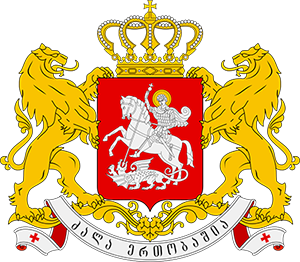PROTECTION OF DIGITAL AND DIGITIZED CULTURAL PROPERTY WITHIN THE SCOPE OF INTERNATIONAL HUMANITARIAN LAW
Author: Guram Gvinjilia, Revaz Berulava
ABSTRACT
The protection of cultural property constitutes one of the fundamental domains of international humanitarian law. However, the advent of modern era of cyber warfare and the digital technologies has generated novel legal challenges. This article examines the applicability of existing international legal frameworks, primarily the 1954 Hague Convention for the Protection of Cultural Property in the Event of Armed Conflict and its additional protocols, to three categories of heritage: physical, digitized, and digitally created cultural property. A historical-legal analysis demonstrates that cultural property has consistently been a deliberate target of destruction and looting during armed conflicts, prompting the gradual evolution of international law from the Lieber Code to the Hague and Geneva Conventions. While the digital transformation has significantly increased the accessibility of cultural heritage, it has simultaneously created heightened risks of cyber-threats, manipulation, and data destruction. The article argues that, notwithstanding the 1954 Hague Convention does not explicitly address “digital” or “digitized” property, an evolutionary interpretation allows such assets to be considered analogous to archives and repositories of cultural memory, thereby subjecting them to the existing regime of international legal protection. This approach is consistent with state practice, UNESCO initiatives, and the principle established in international law that cultural heritage constitutes a common value of humankind.
In conclusion, the study reflects that the protection of digital and digitized cultural heritage has emerged as one of the most pressing challenges of contemporary international law. While existing treaties provide a foundational framework, effective safeguarding requires not only interpretative development of current norms and state practice but also the creation of new, universal, and binding legal standards to ensure the preservation of humanity’s cultural identity in the digital age.
Keywords: International Cyberoperations, Digital cultural property, International Humanitarian Law
REFERENCES
Books
ღვინჯილია, გ. (2022). კიბეროპერაციები და ძალის გამოყენების საერთაშორისო სამართალი.
Paul, Ch. (2015). Digital Art. 3rd ed. London: Thames & Hudson.
Vattel, E. D. (1797). The Law of Nations. G.G. & J. Robinson. London.
Smith, G.B. (1959). Islam and Christendom. in History of the World (2 nd ed., W.N. Weech ed.,).
Henckaerts & Doswald-Beck. Customary International Humanitarian Law.
Grotius, H. (2014). The Rights of the War and Peace. (A.C. Campbell trans., Project Gutenberg).
2014. https://www.gutenberg.org.
Raven, J. (2004). Introduction: The Resonances of Loss, in Lost Libraries: The Destruction of
Great Book Collections Since Antiquity (James Raven ed.).
Toman, J. (1996). The Protection of Cultural Property in the Event of Armed Conflict.
Thucydides, (2008). History of the Peloponnesian War. 566–67 (Richard Crawley trans. Floating
Press). (Fourth century BCE).
Crawley trans. Floating Press. (2008). Fourth century BCE.
Xenophon. (2009). Cyropaedia. F.M. Stawell ed. Henry Graham Dakyns trans., Project
Gutenberg. (370 BCE).
Articles
Alexander, A. (2015). A Short History of International Humanitarian Law, European Journal of International Law.
Lyons, A. (2018). Identity of a Nation. Columbia Human Rights Law Review. https://www.aspi.org.au. 30.08.2025.
Peterson, A. (2014). The Sony Pictures Hack Explained. Washington Post.
Hubbard, H. (2015). Syrian Expert Who Shielded Palmyra Antiquities Meets a Grisly Death at ISIS’ Hands, N.Y. TIMES. https://www.nytimes.com (on file with the Columbia Human Rights Law Review. 03.08.2025).
Cronin, Ch. (2015). 3D Printing: Cultural Property as Intellectual Property. Cardozo Arts & Entertainment Law Journal.
Mersom, D. (2016). Story of Cities, 28: How Postwar Warsaw Was Rebuilt Using 18 th Century Paintings. Guardian. https://www.theguardian.com. 06.09.2025.
Solis, G. D. (2014). Cyber Warfare. Military Law Review.
Gvinjilia, G. (2025). Attribution of Cyberattacks: The Need for New Evidentiary Standards in International Law. Herald of Law. https://heraldoflaw.com. 11.09.2025.
Brosche, J. (2017). Heritage Under Attack: Motives for Targeting Cultural Property During Armed Attack. Int’ L J.
Merryman, J. H. (1989). The Public Interest in Cultural Property. California Law Review.
Silberman, N. (2014). From Cultural Property to Cultural Data: The Multiple Dimensions of “Ownership” in a Global Digital Age. International Law Journal. Cultural Prop.
Gerstenblith, P. (2014). Beyond the 1954 Hague Convention in Cultural Awareness in the Military: Developments and Implications for the Future Humanitarian Cooperation. https://perma.cc. 10.09.2025.
Ong, R. (2021). Hard Drive Heritage: Digital Cultural Property in the Law of Armed Conflict. Columbia Human Rights Law Review.
O’keefe, R. (2010). Protection of Cultural Property Under International Criminal Law. Melbourne Journal of International Law.
Legal acts
Convention for Protection of Cultural Property in the Event of Armed Conflict. 1954.
Convention Respecting the Laws and Customs of War on Land. (1907).
Geneva Conventions of 1949. II Additional Protocol. (1977).
Tallinn Manual 2.0 on the International Law Applicable to Cyber Operations. Cambridge University Press. (2017).
UNESCO, Charter on the Preservation of Digital Heritage. (2003).
War Dept. General Orders No. 100: The Lieber Code. Instructions for the Government of Armies of the United States in the Field. 1863. https://avalon.law.yale.edu . 14.09.2025.
Precedents
Prosecutor v. Ahmad Al Faqi Al Mahdi. ICC. (2016).
Prosecutor v. Jokic. Case No. IT-01-42-T. Sentencing Judgement para 50. ICTY. (2004).
https://perma.cc. 10.09.2025.
Internet resources
Miller, C. (2019). China and Taiwan Clash over Wikipedia Edits. BBC.https://www.bbc.com. 06.09.2025.
Council on Foreign Affairs. Cyber Operations Tracker. https://www.cfr.org. 29.08.2025.
Council on Foreign Affairs. Understanding the Proliferation of Cyber Capabilities. https://www.cfr.org. 29.08.2025
E-Estonia. Estonia to Open the World’s First Data Embassy in Luxembourg. (2017). https://perma.cc. 29.08.2025.
Mission Statement, CYARK. https://www.cyark.org. 29.08.2025.
Rekrei: A Summary. 2021. https://perma.cc. 06.09.2025.
U.S. Department of Commerce. National Institute of Standards and Technology. Information Security. Glossary. Appendix B.chromeextension://efaidnbmnnnibpcajpcglclefindmkaj/https://nvlpubs.nist.go 29.08.2025.
UNESCO. (2020). Online Meeting of Ministers of Culture: Impact of Covid-19 Pandemic on the Cultural Sector and the Public Policy Response. https://perma.cc. 11.09.2025.
